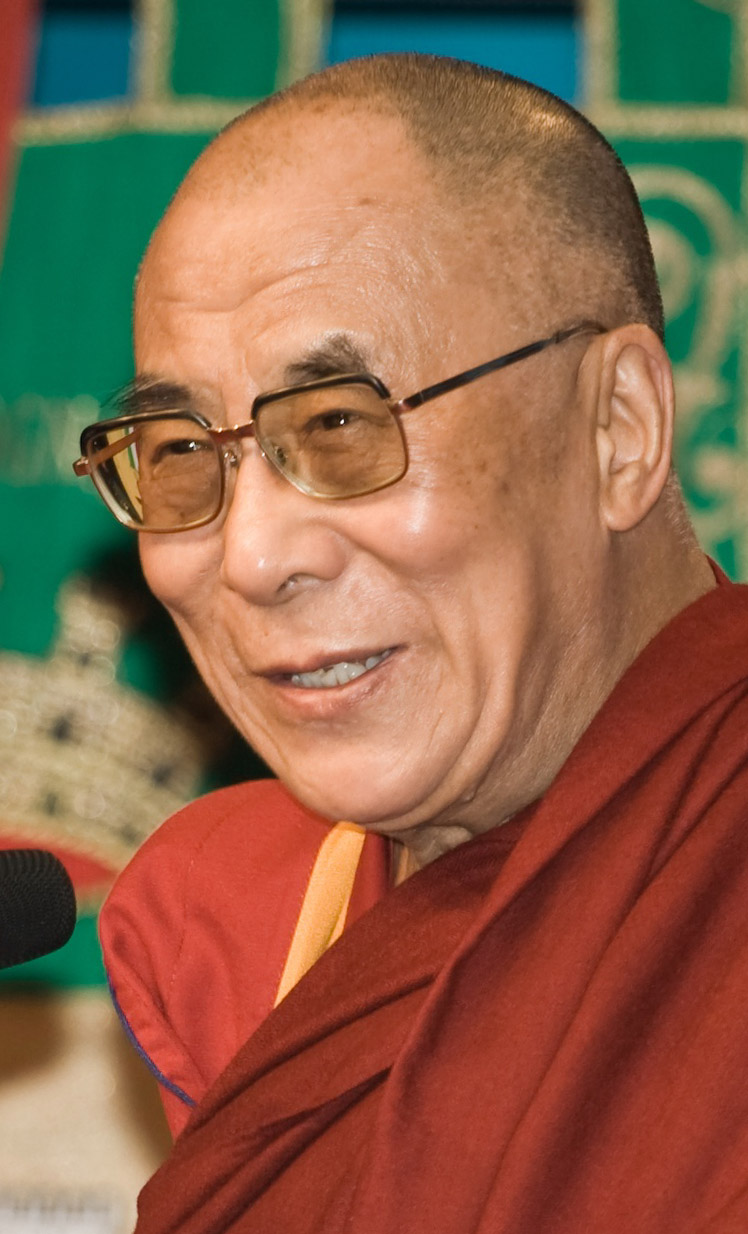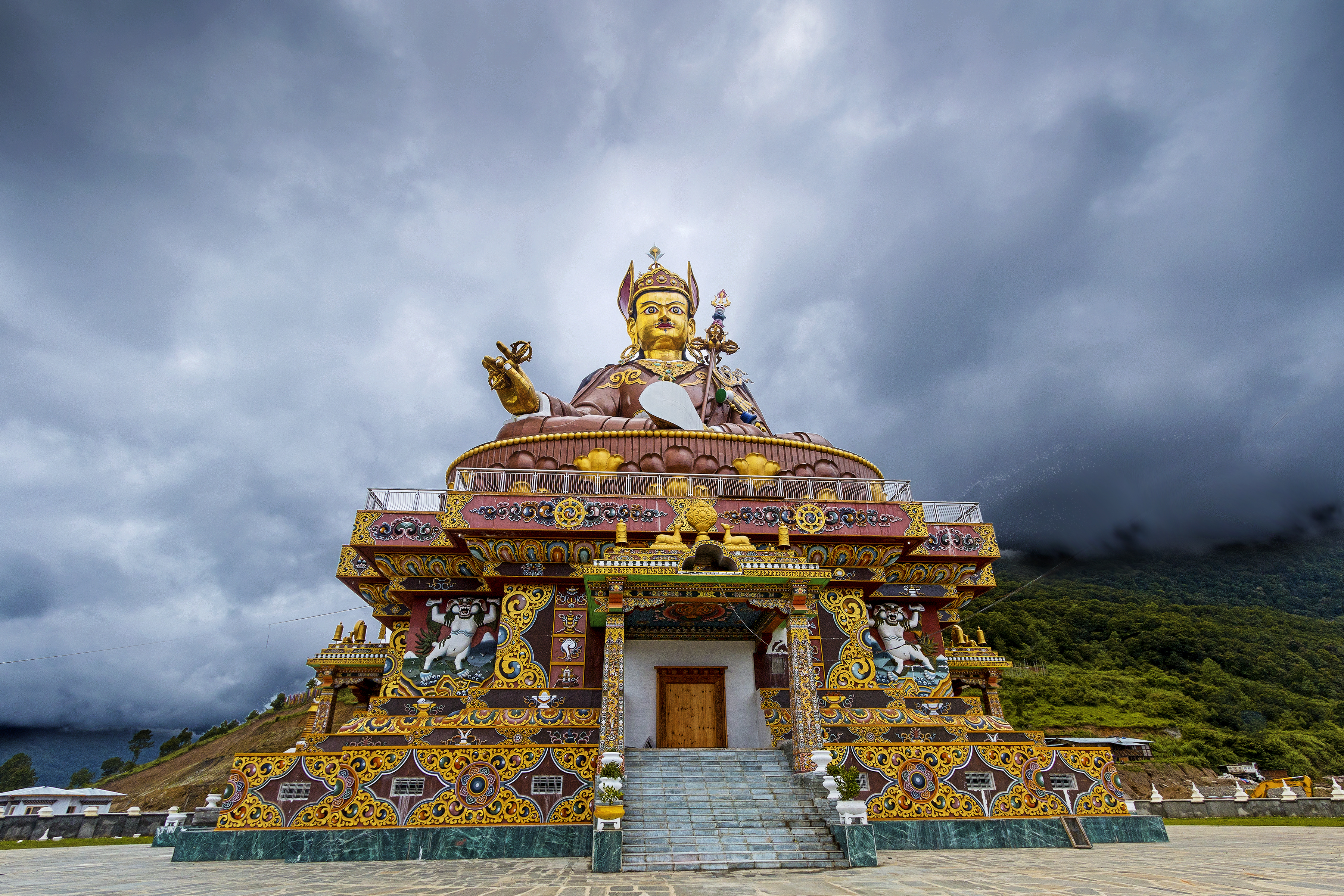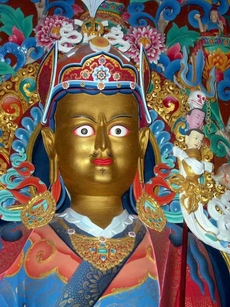|
Mingyur Paldron
Jetsunma Mingyur Paldron, or Mingyur Peldrön (Tibetan: མི་འགྱྱུར་དཔལ་སྒྒྲྲོན་ mi 'gyur dpal sgron, 1699-1769) was a Tibetan Buddhist lama in the Kagyu and Nyingma traditions. She was the daughter of Chögyal Terdag Lingpa (Tibetan: ཆོས་རྒྒྱྱལ་གཏེར་བདག་གླླིང་པ་ chos rgyal gter bdag gling pa), the founder of Mindrolling Monastery. She was a disciple of Gyurme Tekchok Tendzin. She received the entire transmissions of Thug Je Chenpo De Sheg Kun Du from Lochen Dharmashri and mastered the Tsa-lung and Thigle practices at the age of fourteen. In 1717, when the Mongols invaded Tibet, she escaped to Sikkim where she taught the dharma for two years and founded the Pema Yangtse monastery. After the Mongol invasion, she returned to the Tibetan monastery Mindrolling, which had been destroyed, and rebuilt it with her younger brother. She also gave empowerments, oral transmissions, and explanations ... [...More Info...] [...Related Items...] OR: [Wikipedia] [Google] [Baidu] |
Tibetan People
The Tibetan people (; ) are an East Asian ethnic group native to Tibet. Their current population is estimated to be around 6.7 million. In addition to the majority living in Tibet Autonomous Region of China, significant numbers of Tibetans live in the Chinese provinces of Gansu, Qinghai, Sichuan, and Yunnan, as well as in India, Nepal, and Bhutan. Tibetan languages belong to the Tibeto-Burman language group. The traditional or mythological explanation of the Tibetan people's origin is that they are the descendants of the human Pha Trelgen Changchup Sempa and rock ogress Ma Drag Sinmo. It is thought that most of the Tibeto-Burman speakers in Southwest China, including Tibetans, are direct descendants from the ancient Qiang people. Most Tibetans practice Tibetan Buddhism, although some observe the indigenous Bon religion and there is a small Muslim minority. Tibetan Buddhism influences Tibetan art, drama and architecture, while the harsh geography of Tibet has produ ... [...More Info...] [...Related Items...] OR: [Wikipedia] [Google] [Baidu] |
Lama
Lama (; "chief") is a title for a teacher of the Dharma in Tibetan Buddhism. The name is similar to the Sanskrit term ''guru'', meaning "heavy one", endowed with qualities the student will eventually embody. The Tibetan word "lama" means "highest principle", and less literally "highest mother" or "highest parent" to show close relationship between teacher and student."lama" from Historically, the term was used for venerated spiritual masters or heads of . Today the title can be used as an [...More Info...] [...Related Items...] OR: [Wikipedia] [Google] [Baidu] |
Kagyu
The ''Kagyu'' school, also transliterated as ''Kagyü'', or ''Kagyud'' (), which translates to "Oral Lineage" or "Whispered Transmission" school, is one of the main schools (''chos lugs'') of Tibetan (or Himalayan) Buddhism. The Kagyu lineages trace themselves back to the 11th century Indian Mahasiddhas Naropa, Maitripa and the yogini Niguma, via their student Marpa Lotsawa (1012–1097), who brought their teachings to Tibet. Marpa's student Milarepa was also an influential poet and teacher. The Tibetan Kagyu tradition gave rise to a large number of independent sub-schools and lineages. The principal Kagyu lineages existing today as independent schools are those which stem from Milarepa's disciple, Gampopa (1079–1153), a monk who merged the Kagyu lineage with the Kadam tradition. The Kagyu schools which survive as independent institutions are mainly the Karma Kagyu, Drikung Kagyu, Drukpa Lineage and the Taklung Kagyu. The Karma Kagyu school is the largest of the ... [...More Info...] [...Related Items...] OR: [Wikipedia] [Google] [Baidu] |
Nyingma
Nyingma (literally 'old school') is the oldest of the four major schools of Tibetan Buddhism. It is also often referred to as ''Ngangyur'' (, ), "order of the ancient translations". The Nyingma school is founded on the first lineages and translations of Buddhist scriptures from Sanskrit into Tibetan in the eighth century, during the reign of King Trisong Detsen (r. 710–755). Nyingma traditional histories consider their teachings to trace back to the first Buddha Samantabhadra (Güntu Sangpo) and Indian mahasiddhas such as Garab Dorjé, Śrī Siṃha and Jñānasūtra. Traditional sources trace the origin of the Nyingma order in Tibet to figures associated with the initial introduction of Buddhism in the 8th century, such as Padmasambhava, Yeshe Tsogyal, Vimalamitra, Vairotsana, Buddhaguhya and Shantaraksita. The Nyingma tradition is also seen having been founded at Samyé, the first monastery in Tibet. Nyingma teachings are also known for having been passed down through ... [...More Info...] [...Related Items...] OR: [Wikipedia] [Google] [Baidu] |
Mindrolling Monastery
Mindrolling Monastery (, English: "Sublime Island of Ripening Liberation"), is one of the "Six Mother Monasteries" of the Nyingma school in Tibet. It was founded by Rigzin Terdak Lingpa in 1676. Tendrak Lingpa's lineage is known as the ''Nyo'' lineage. The name in Tibetan means "Place of Perfect Emancipation". It is located in Zhanang County, Shannan Prefecture, Tibet Autonomous Region, China, known as U-Tsang. Mindrolling Monastery is approximately 43 kilometers east of the Lhasa airport, on the south side of the Tsangpo river. History Mindrolling was heavily damaged in 1718 by the Dzungar Mongols from East Turkistan. It was rebuilt during the reign of the Seventh Dalai Lama (1708–1757). Dungsay Rinchen-namgyel and Jetsunma Mingyur Paldron, the son and daughter of Terdak Lingpa, supervised its reconstruction. For nearly 300 years its monastic university trained Nyingma scholars and yogis from all over Tibet. At Mindrolling, special emphasis was placed on the learning ... [...More Info...] [...Related Items...] OR: [Wikipedia] [Google] [Baidu] |
Mongols
The Mongols ( mn, Монголчууд, , , ; ; russian: Монголы) are an East Asian ethnic group native to Mongolia, Inner Mongolia in China and the Buryatia Republic of the Russian Federation. The Mongols are the principal member of the large family of Mongolic peoples. The Oirats in Western Mongolia as well as the Buryats and Kalmyks of Russia are classified either as distinct ethno-linguistic groups or subgroups of Mongols. The Mongols are bound together by a common heritage and ethnic identity. Their indigenous dialects are collectively known as the Mongolian language. The ancestors of the modern-day Mongols are referred to as Proto-Mongols. Definition Broadly defined, the term includes the Mongols proper (also known as the Khalkha Mongols), Buryats, Oirats, the Kalmyk people and the Southern Mongols. The latter comprises the Abaga Mongols, Abaganar, Aohans, Baarins, Chahars, Eastern Dorbets, Gorlos Mongols, Jalaids, Jaruud, Kharchins, Khishigten, ... [...More Info...] [...Related Items...] OR: [Wikipedia] [Google] [Baidu] |
Sikkim
Sikkim (; ) is a state in Northeastern India. It borders the Tibet Autonomous Region of China in the north and northeast, Bhutan in the east, Province No. 1 of Nepal in the west and West Bengal in the south. Sikkim is also close to the Siliguri Corridor, which borders Bangladesh. Sikkim is the least populous and second smallest among the Indian states. Situated in the Eastern Himalaya, Sikkim is notable for its biodiversity, including alpine and subtropical climates, as well as being a host to Kangchenjunga, the highest peak in India and third highest on Earth. Sikkim's capital and largest city is Gangtok. Almost 35% of the state is covered by Khangchendzonga National Park – a UNESCO World Heritage Site. The Kingdom of Sikkim was founded by the Namgyal dynasty in the 17th century. It was ruled by Buddhist priest-kings known as the Chogyal. It became a princely state of British India in 1890. Following Indian independence, Sikkim continued its protectorate stat ... [...More Info...] [...Related Items...] OR: [Wikipedia] [Google] [Baidu] |
Dharma
Dharma (; sa, धर्म, dharma, ; pi, dhamma, italic=yes) is a key concept with multiple meanings in Indian religions, such as Hinduism, Buddhism, Jainism, Sikhism and others. Although there is no direct single-word translation for ''dharma'' in European languages, it is commonly translated as "righteousness", "merit" or "religious and moral duties" governing individual conduct.Britannica, The Editors of Encyclopaedia. (9 April 2019)Dharma. ''Encyclopedia Britannica''. Accessed 14 September 2021. In Hinduism, dharma is one of the four components of the '' Puruṣārtha'', the aims of life, and signifies behaviours that are considered to be in accord with ''Ṛta'', the order that makes life and universe possible. It includes duties, rights, laws, conduct, virtues and "right way of living".see: *"Dharma", ''The Columbia Encyclopedia'', 6th Ed. (2013), Columbia University Press, Gale, ; *Steven Rosen (2006), Essential Hinduism, Praeger, , Chapter 3. It had a transte ... [...More Info...] [...Related Items...] OR: [Wikipedia] [Google] [Baidu] |
Mindrolling
Mindrolling Monastery (, English: "Sublime Island of Ripening Liberation"), is one of the "Six Mother Monasteries" of the Nyingma school in Tibet. It was founded by Rigzin Terdak Lingpa in 1676. Tendrak Lingpa's lineage is known as the ''Nyo'' lineage. The name in Tibetan means "Place of Perfect Emancipation". It is located in Zhanang County, Shannan Prefecture, Tibet Autonomous Region, China, known as U-Tsang. Mindrolling Monastery is approximately 43 kilometers east of the Lhasa airport, on the south side of the Tsangpo river. History Mindrolling was heavily damaged in 1718 by the Dzungar Mongols from East Turkistan. It was rebuilt during the reign of the Seventh Dalai Lama (1708–1757). Dungsay Rinchen-namgyel and Jetsunma Mingyur Paldron, the son and daughter of Terdak Lingpa, supervised its reconstruction. For nearly 300 years its monastic university trained Nyingma scholars and yogis from all over Tibet. At Mindrolling, special emphasis was placed on the learning ... [...More Info...] [...Related Items...] OR: [Wikipedia] [Google] [Baidu] |
Chögyal Terdag Lingpa
The Chogyal ("Dharma Kings", ) were the monarchs of the former Kingdom of Sikkim, which belonged to the Namgyal dynasty. The Chogyal was the absolute monarch of Sikkim from 1642 to 1975, when the monarchy was abolished and the Sikkimese people voted in a referendum to make Sikkim the 22nd state of India. History From 1642 to 1975, Sikkim was ruled by the Namgyal Monarchy (also called the Chogyal Monarchy), founded by Phuntsog Namgyal, the fifth-generation descendant of Guru Tashi, a prince of the Minyak House who came to Sikkim from the Kham province of Tibet. Chogyal means 'righteous ruler', and was the title conferred upon Sikkim's Buddhist kings during the reign of the Namgyal Monarchy. The reign of the Chogyal was foretold by the patron saint of Sikkim, Guru Rinpoche. The 8th-century saint had predicted the rule of the kings when he arrived in the state. In 1642, Phuntsog Namgyal was crowned as Sikkim's first Chogyal in Yuksom. The crowning of the king was ... [...More Info...] [...Related Items...] OR: [Wikipedia] [Google] [Baidu] |








